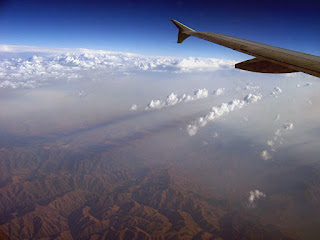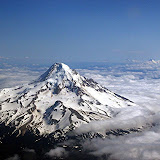
The airshow, the DC-9, a ramp helper, the Secret Service and President Bush's bullet-proof podium - or how I helped save some Secret Service guy's job - or at least prevent a reprimand!
Not all stories of interest occur in the cockpit. I realize now, thinking back from the position of a pilot sitting at a computer in a 40-year snowstorm, to an interesting period of mini-history which occurred in a warm sunny place, about two decades ago.
You wouldn't expect all of these elements to come together in one place, yet in the late 80's in San Diego, it happened. The Soviet Union was over. It was the end of the Reagan era and President -to-be, Bush-the-first was campaigning. Some Admiral thought it would be great to have a huge airshow and to invite the world, and have it at Brown field in San Diego. And what a success it was! AN-124's, the Concorde, and a variety of other very unusual aircraft, all the subject of other stories yet to be told.
This story, as promised, is about one very heavy bullet proof podium. I know it was heavy because I helped lift it. The airshow was ending and one of the final speakers was the vice president and soon-to-be president, campaigning away with a typical entourage. I got into the airshow for free because I volunteered to help guide people and drive a golf cart, doing whatever was required. They used us lowly flight instructors because they knew at least we would have the common sense not to walk into a propeller and probably enough common sense to prevent the average attendee from doing the same.
Bush finished speaking, and was hustled off the podium into a waiting black limo, which immediately moved towards the row of idling aircraft, followed by a host of boxy black cars and vans. I watched from the back, enjoying the view from my golf cart seat, as one, then a second plane in the entourage took off, and a third began to taxi.
At that moment, several very distraught looking gentlemen, very fit, and running, with black jackets and ties and sunglasses came towards me. One flashed a badge. "We need your help!" he panted (I am not making this up - somewhere is a retired SS agent who might verify all this). He pointed to a box that looked like a funny shaped coffin. "That's the vice president's bullet proof podium, and it was supposed to be on the plane!"
"Which plane?" I asked.
"That one!" and he pointed to the second jet taking off, wheels going up into the wells and heading east. It needs to be there for his next appearance!"
Another agent spoke up, pointing to the taxiing third aircraft. "We need to get it on the press plane, he said. "Come on, let's go!"
A moment later, the agents had the encased podium on the back of the golf cart and two of us sat in the front, one on the back and one jogging along side, we headed towards the press plane on the taxi way.
"Hurry!" the one stated, but I did not have a radio to the tower or ground control.
"We can't just get too close to that plane, we have to contact the tower, I told them, and one of them spoke into some radio and about a minute later the DC-9 stopped, and the rear air stair dropped open and down came the first officer. And that is where it got really interesting, and a little surreal.
The agents told the first officer of the need to get the podium on board, and he pointed out they had no loading ramp, but he thought they could get it into a baggage space near the right engine nacelle. He opened that panel, and we tried lifting it in. I can tell you, one athletic CFI, and three agents struggled with that sucker, it was heavy. The helpful first officer suggested "someone skinny" climb into the baggage compartment and pull while the others pushed. I was the skinniest. All eyes turned to me.
We positioned the golf cart so I could stand on it and jump into the cargo bay, and there I was, jet engine whining over my head, pulling on the VP's bullet proof podium while the Secret Service pushed, and it dawned on me if this thing angled over and tipped onto me, there I'd be, trapped in the howling belly of a DC-9 while the press in the compartment overhead wondered about the delay.
Finally we got the box into position and I squirmed out. There was a quick round of hand-shakes and smiles, and I tell you, those Secret Service guys sure looked relieved. The first officer disappeared back into the plane, up went the stairs, and a minute or two later, they were wheels-up heading east, chasing the first two jets.
Since I never read anything about it I assume it all worked out well. I also assume that's not the regular way to load a bullet proof presidential podium onto a plane!
Onwards & Upwards!
Rob Bremmer






















